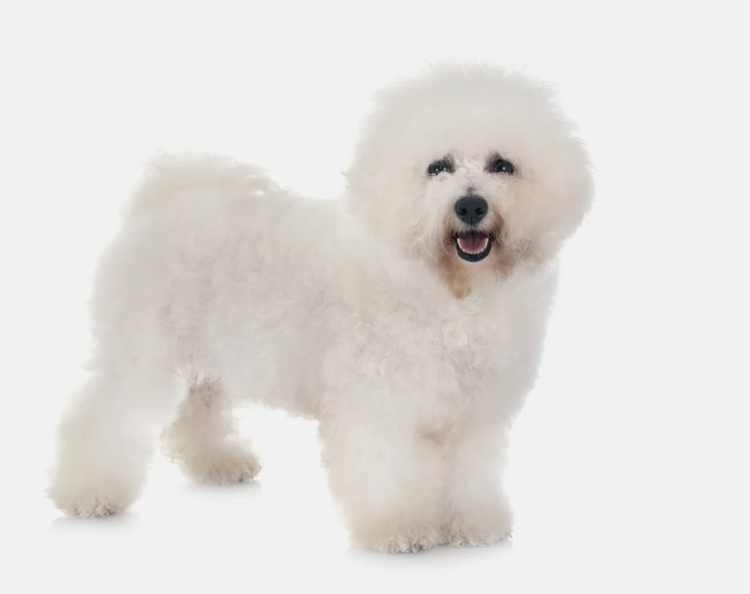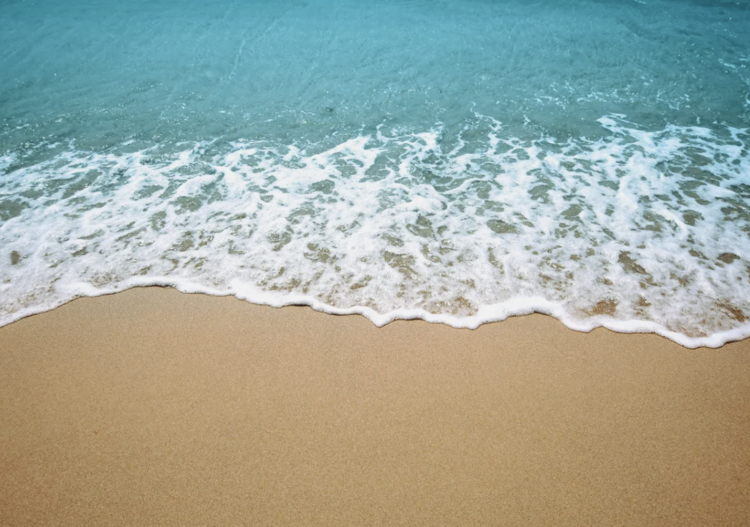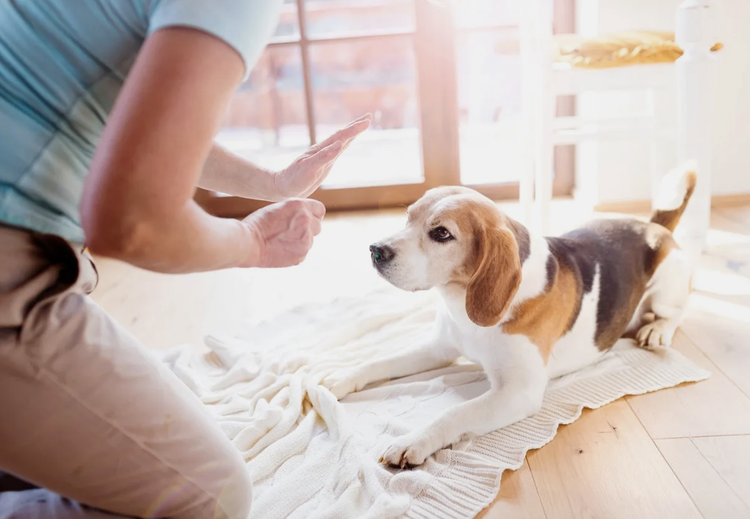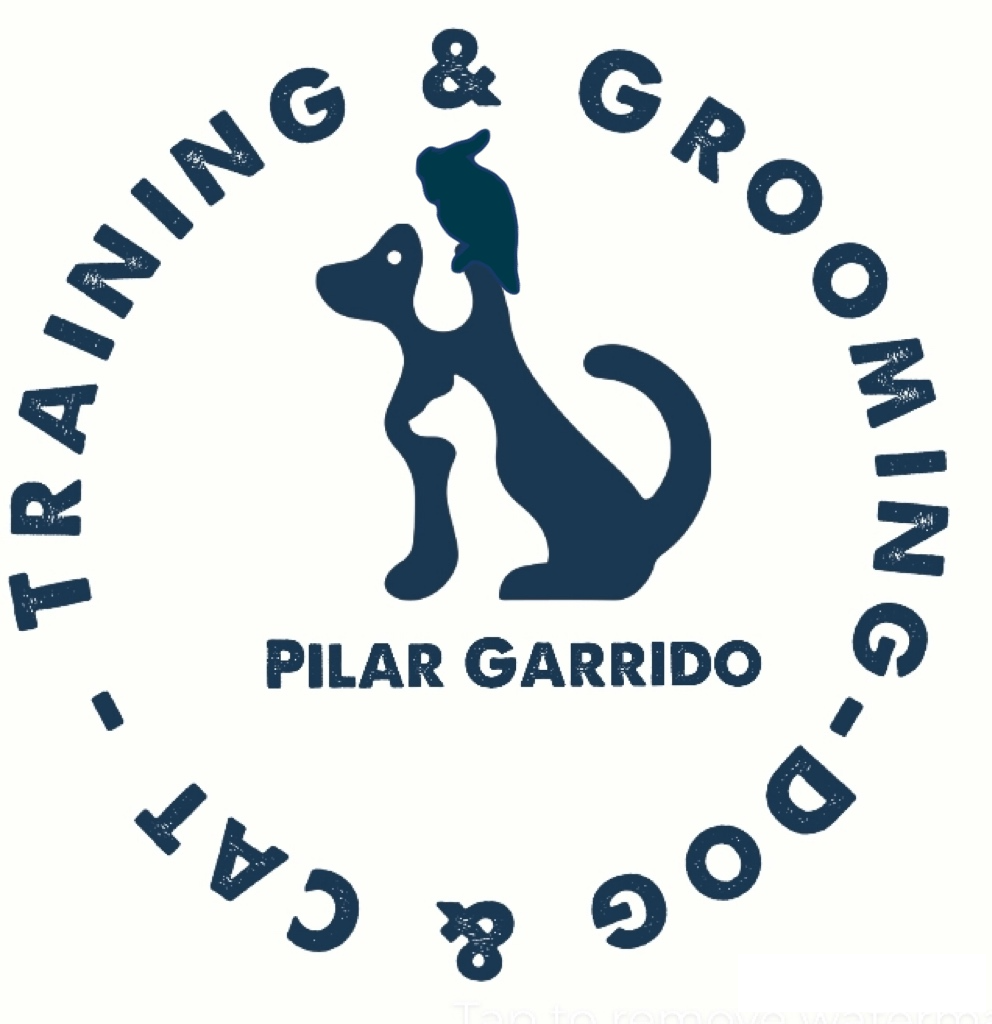Ask Pilar: Barking At Big Dogs, Fear Of Water And Sniffing Guests
Ask Pilar, Aug 3, 2020
Welcome to our “Ask Pilar” series! Professional dog trainer and groomer Pilar Garrido will answer questions you have about your pup. She is only providing a basic overview. For more information, please consult a trainer, behaviorist or groomer in your area, who can directly work with your dogs.
For this round of questions, our readers asked:
1. My bichon frise-mix is friendly around humans and dogs his size. However, when he sees large dogs, he absolutely freaks out. He starts barking and charging at them when we are on walks. I have to restrain him with the collar. How can we get him to calm down around these larger dogs?

If your dog barks at larger dogs, the culprit could be that he was not well socialized with larger dogs when he was young, or that he has had negative experiences with them while growing up. We need to remember that — like us, when it comes to other people — dogs do not have to like every other dog. What’s necessary, however, is teaching your dog to stay calm when there is a big dog nearby. First, you need to act confidently when you see the bigger dog. Remain calm and avoid acting like something bad will happen. Dogs are good at picking up on how we feel. My suggestion is to find a big dog that is very calm and is used to being with smaller dogs, so that you can bring the two for walks together. Ask your neighbor or a friend if they have a big, calm dog with whom you feel safe. When introducing a new dog to your pup, you must bring the dogs together in a neutral territory, away from your home. Normally, your dog will become dominant and territorial when he is in or near the house. You can also look for group training classes for dogs (including larger ones), and have your dog participate to socialize with these dogs. When out walking, use a Halti dog collar (good for easy correction) and, when you see a big dog, do not stop but continue on. Learn to ignore the larger dog and your dog will do the same. However, when you see a big dog heading towards you, make sure you move away and maintain a safe distance. Bring a special treat with you when you go out, but do not give it to your pup without a purpose. If your dog starts barking, distract him with the treat or a toy. That special treat is only for going out. Do not give him the treat in the house so that your pup will remember that when he behaves well outside, he gets a special reward.
(⬇️SCROLL DOWN FOR SPANISH TRANSLATION ⬇️)
2. I have a doberman who is terrified of the water. He is active and likes to play but refuses to go to the beach. Is there a way for him to get over his fear of waves?

It is fun when our dog can play with us, in water and elsewhere. People who have had bad experiences at sea will avoid swimming in the water; same with dogs. So a safe introduction is a good start. Your dog needs to first experience being in a shallow body of water or pool before he can venture out into the waves. If you can find a water park for dogs, that could be a good start. Your pup may need a floating device because the moment he takes in lots of water and feels like he is drowning, he may want to avoid water altogether. After some practice, you can introduce your pup to the beach when he feels more comfortable. Do not force him in the water in any way. Do it little by little. Play with his favorite toy on the beach and then move closer and closer to the water. Never push the dog into the water. You need to lead your pup by going into the water first. With your pup, it’s always “follow the leader.” Find a spot on a beach where dogs are allowed. You should bring your dog to the ocean when the waves are calm and shallow. Dogs are not natural swimmers; they need to learn, but they learn faster than us. They must associate the water with being a safe, secure place. Once this happens, your pup will be swimming in no time! Or if he just really hates the water, other outdoor activities may have to do. (Keep in mind: it is not healthy for a dog to drink saltwater, and it can cause intoxication. So be careful!)
3. My new puppy won’t stop licking and sniffing new people. She gets in their faces and it can be a little excessive. How can I calm her down around friends?

Please remember that puppies are curious animals. When you bring someone into your house, it’s instinctual that your pup tries to get to know them. You need to develop strong leadership skills so that she knows who is in control. When you are alone with the puppy, teach her to stay in one place and then give her a reward for complying. When she learns this command, tell your puppy to “stay” when you have visitors in the house. When your visitors come to your house, spend time with them before introducing them to the puppy. Tell them to not make eye contact with the puppy, and to ignore her — this includes not petting or touching her. When you introduce the puppy, it is then time to touch and play. As a guest, do not display too much excitement when the puppy comes to you. This can provoke the puppy to pee and, if that happens, we now have an anxious dog. There must be a limit when it comes to playing with the puppy. There is a time for play and time to be serious. Licking is a way for the puppy to say she likes you, so the more you touch the puppy, the more she will lick (kiss) you. When playing is over, tell your visitor to stop touching the puppy, and to stay calm and to not call her name. Bring the puppy to her favorite spot, give her a toy and give her a special treat.
Have questions? Follow us and ask on our IG @dogwhispererhq.
